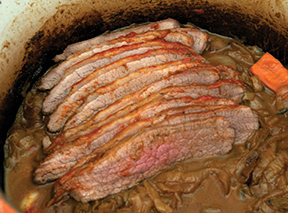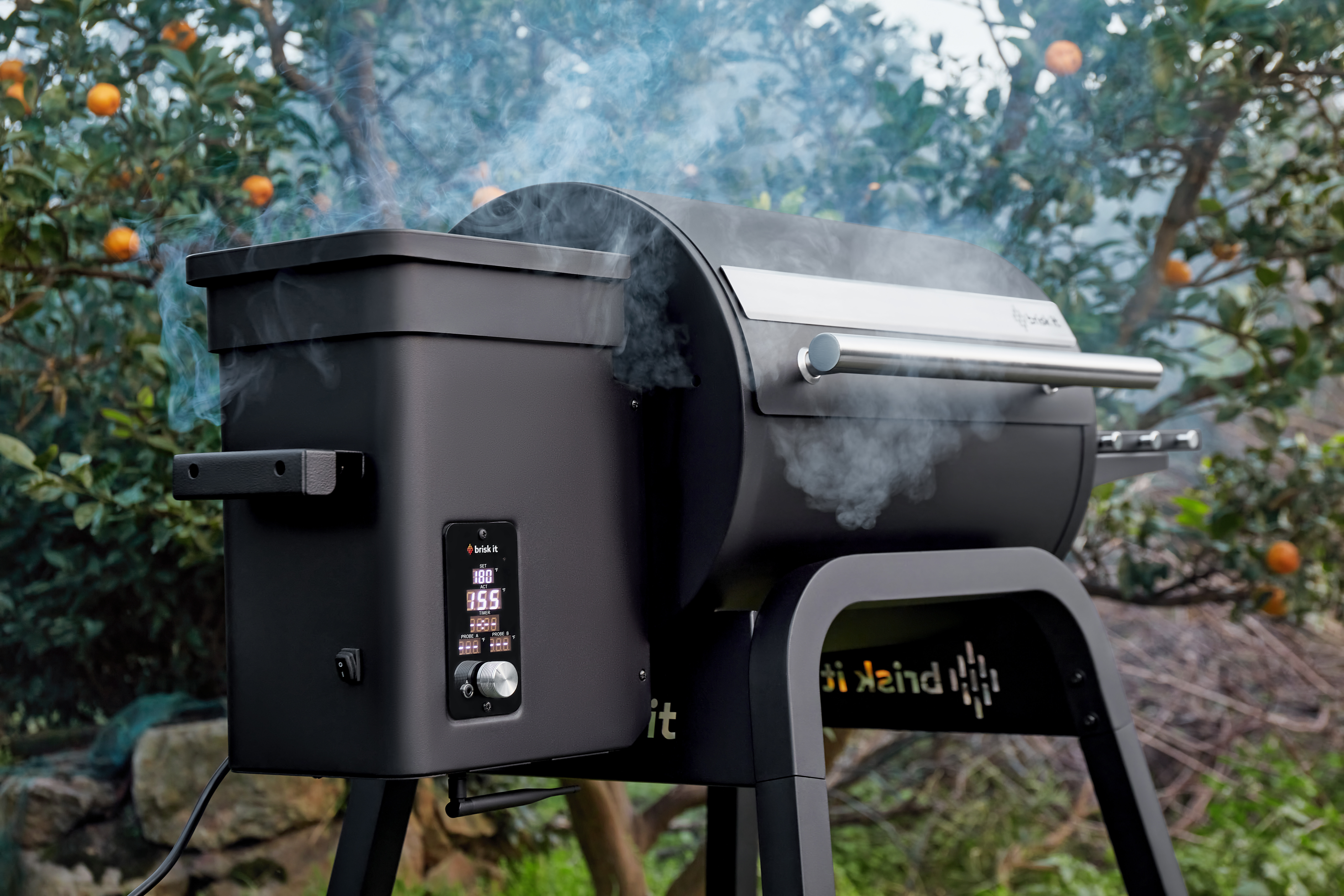
This was originally published in TWICE’s September 25 print issue.
L’ Shana Tovah. I’m writing this on Rosh Hashana, the first day of the Jewish new year. While I am not Jewish, my wife and sons are, and over the years I have embraced the traditions of the holidays with fervor. Part of that is because practically every Jewish holiday is celebrated with a feast. I’m all about feasts.
So tonight, 20 people will sit at our table and feast together. The new year for Jews is not necessarily a celebration, but rather a renewal, an occasion for reflecting, the start of a new covenant. The tradition is to reflect on the accomplishments of the previous year and think about how one can make a better effort in the new year.
It is a helpful exercise. It is also an opportunity to eat traditional foods, such as matzoh ball soup and brisket (or “Mmmm … brisket” in the voice of Homer Simpson).
It’s an interesting centerpiece for a meal, brisket is, a humble cut of meat, one that comes from the chest of the cow. It includes the cow’s pectoral muscles, which, because cows don’t have collar bones, support about 60 percent of the animal’s weight when standing. As a result, it is mostly muscle with a large percentage of connective tissue that, when cooked incorrectly, will almost always be chewy and stringy.
But cooked correctly, slowly and with care and patience, brisket becomes meltingly tender and full of flavor. It is, in the end, worth the effort.
I bring this up because I had a conversation last week with a retailer who was complaining to me that the business is changing so fast that it is hard to forecast price and inventory. His complaint boiled down to this: “I am stuck following the lead of my competitors even though I know that it won’t help me in the end.”
While I am sympathetic of his predicament, I also realize that what he is complaining about is completely in his control. To overcome these market conditions, one has to go slowly, with care and patience, knowing that in the end the results will be worth the effort.
The Internet and e-commerce have thrown a hammer in the traditional merchants’ works. Consumers today have short attention spans and even though the breadth of information available to them with a simple Google search is mind-bogglingly large, most consumers still act mostly on impulse when making a purchase. There may be 2,500 reviews on Amazon for a specific product, but the average consumer may read two or three before clicking Add To My Cart. So for a retailer, time needs to be spent on the outset. Like a good brisket, a retail strategy needs patience and planning.
Step one: Choose a good, quality cut of meat. The retail equivalent is to choose inventory wisely and discerningly. Instead of stocking 12 SKUs of a product, a well-curated good/better/best selection helps the potential customer focus on what he or she exactly needs.
Step two: Sear the brisket on both sides to create a crust and keep the juices in. Or, at retail, prepare to market and merchandise before you begin to sell. As Ben Franklin said: “By failing to prepare, you are preparing to fail.”
Step three: Roast low and slow for longer than you think necessary. You can’t rush a good brisket, and the longer it cooks, the more tender it becomes. At retail, initial sales are not necessarily the tell-all. Sometimes a product needs some time to gain an audience, or let word-of-mouth spread.
We live in a break-neck world, where decisions are needed to be made everyday, but a little patience, a little reflection, a pause in the slow lane, can be valuable. Sometimes, slow and steady does win the race.













